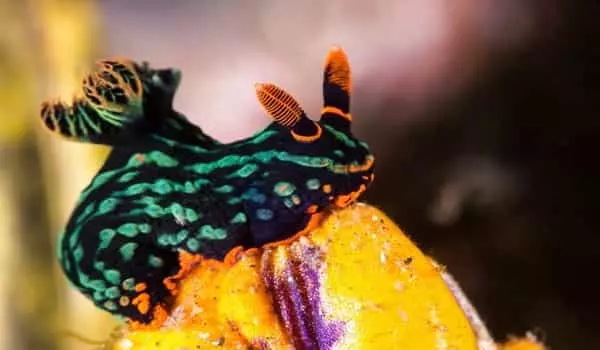The sea slug has taught neuroscientists the most fundamental intelligence traits that any creature in the animal kingdom requires to survive. Researchers have now replicated these strategies in a quantum material, taking a step closer to understanding how to build artificial intelligence directly into the hardware. To get any smarter, artificial intelligence must first be as intelligent as one of the simplest creatures in the animal kingdom: the sea slug.
According to a new study, a material can mimic the sea slug’s most important intelligence features. The discovery is a step toward developing hardware that could aid in making AI more efficient and reliable for applications ranging from self-driving cars and surgical robots to social media algorithms.
A team of researchers from Purdue University, Rutgers University, the University of Georgia, and Argonne National Laboratory conducted the study, which was published this week in the Proceedings of the National Academy of Sciences.
“By studying sea slugs, neuroscientists discovered intelligence hallmarks that are fundamental to any organism’s survival,” said Shriram Ramanathan, a Purdue professor of materials engineering. “We want to use that mature intelligence in animals to speed up the development of AI.”
A study based on the findings of a sea slug suggests that artificial intelligence hardware should be improved. The discovery is a step toward building hardware that could help make AI more efficient and reliable for technology ranging from self-driving cars and surgical robots to social media algorithms.
Neuroscientists have discovered two major signs of intelligence in sea slugs: habituation and sensitization. Habituation is the process of gradually becoming accustomed to a stimulus, such as tuning out noises while driving the same route to work every day. Sensitization is the opposite; it is a strong reaction to a new stimulus, such as avoiding bad food at a restaurant.
AI has a difficult time learning and storing new information without overwriting information it has already learned and stored, a problem known as the “stability-plasticity dilemma” by researchers studying brain-inspired computing. AI would be able to “forget” unneeded information through habituation (achieving greater stability), whereas sensitization would aid in the retention of new and important information (enabling plasticity).
The researchers discovered a way to demonstrate both habituation and sensitization in nickel oxide, a quantum material, in this study. The material is referred to as “quantum” because its properties are not explainable by classical physics.
If a quantum material can reliably mimic these types of learning, then AI could be built directly into the hardware. Furthermore, if AI could operate using both hardware and software, it might be able to perform more complex tasks while using less energy.

“We basically replicated experiments done on sea slugs in quantum materials in order to understand how these materials can be of interest for AI,” Ramanathan explained. According to neuroscience studies, the sea slug exhibits habituation when it stops withdrawing its gills as much in response to being tapped on the siphon. An electric shock to its tail, on the other hand, causes its gill to withdraw much more dramatically, indicating sensitization.
The equivalent of a “gill withdrawal” in nickel oxide is an increase in electrical resistance. The researchers discovered that repeatedly exposing the material to hydrogen gas causes the change in electrical resistance of nickel oxide to decrease over time, but introducing a new stimulus, such as ozone, greatly increases the change in electrical resistance.
Inspired by these findings, a research group led by Kaushik Roy, the Edward G. Tiedemann Jr. Distinguished Professor of Electrical and Computer Engineering at Purdue, modeled nickel oxide’s behavior and developed an algorithm that successfully used these habituation and sensitization strategies to cluster data points.
“The stability-plasticity conundrum remains unresolved. But, based on the behavior of a quantum material, we’ve demonstrated a way to address it “Roy stated. “In the future, if we can turn a material that learns like this into hardware, AI will be able to perform tasks much more efficiently.”
Researchers will need to figure out how to apply habituation and sensitization in large-scale systems before they can use quantum materials as AI hardware. They’d also have to figure out how a material would react to stimuli while embedded in a computer chip.
According to the researchers, this study is a starting point for guiding those next steps. In addition to the Purdue experiments, a team at Rutgers University performed detailed theory calculations to understand what was happening within nickel oxide at a microscopic level in order to mimic the intelligence features of the sea slug. The properties of the nickel oxide sample were characterized by Argonne National Laboratory, and conductivity was measured by the University of Georgia to further analyze the material’s behavior.















